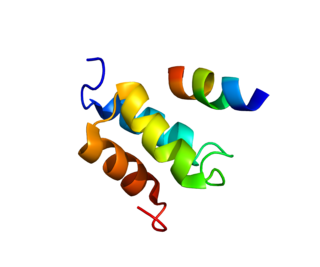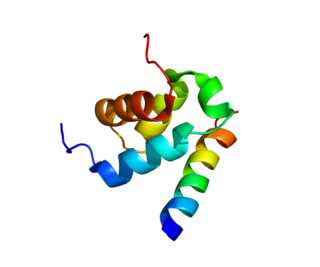ATP-binding cassette sub-family D member 3 is a protein that in humans is encoded by the ABCD3 gene. [5] [6] [7]
ATP-binding cassette sub-family D member 3 is a protein that in humans is encoded by the ABCD3 gene. [5] [6] [7]
The protein encoded by this gene is a member of the superfamily of ATP-binding cassette (ABC) transporters. ABC proteins transport various molecules across extra- and intra-cellular membranes. ABC genes are divided into seven distinct subfamilies (ABC1, MDR/TAP, MRP, ALD, OABP, GCN20, White). This protein is a member of the ALD subfamily, which is involved in peroxisomal import of fatty acids and/or fatty acyl-CoAs in the organelle. All known peroxisomal ABC transporters are half transporters which require a partner half transporter molecule to form a functional homodimeric or heterodimeric transporter. This peroxisomal membrane protein likely plays an important role in peroxisome biogenesis.
Mutations have been associated with some forms of Zellweger syndrome, a heterogeneous group of peroxisome assembly disorders. [7] However, this association was denied [8] and congenital bile acid synthesis defect-5 (CBAS5) was recently shown to be caused by homozygous mutation in the ABCD3 gene [9]
ABCD3 has been shown to interact with PEX19. [10] [11] [12] [13]

ABCD1 is a protein that transfers fatty acids into peroxisomes.

Peroxisomal targeting signal 1 receptor (PTS1R) is a protein that in humans is encoded by the PEX5 gene.

Canalicular multispecific organic anion transporter 2 is a protein that in humans is encoded by the ABCC3 gene.

Peroxisome biogenesis factor 1, also known as PEX1, is a protein which in humans is encoded by the PEX1 gene.

Peroxisomal biogenesis factor 19 is a protein that in humans is encoded by the PEX19 gene.

ATP-binding cassette sub-family A member 2 is a protein that in humans is encoded by the ABCA2 gene.

Peroxisomal membrane protein PEX14 is a protein that in humans is encoded by the PEX14 gene.

Peroxisomal biogenesis factor 2 is a protein that in humans is encoded by the PEX2 gene.

Peroxisome assembly protein 12 is a protein that in humans is encoded by the PEX12 gene.

Peroxisomal membrane protein PEX13 is a protein that in humans is encoded by the PEX13 gene. It located on chromosome 2 next to KIAA1841

Peroxisomal biogenesis factor 3 is a protein that in humans is encoded by the PEX3 gene.

ATP-binding cassette sub-family B member 9 is a protein that in humans is encoded by the ABCB9 gene.

Peroxisome assembly factor 2 is a protein that in humans is encoded by the PEX6 gene. PEX6 is an AAA ATPase that localizes to the peroxisome. PEX6 forms a hexamer with PEX1 and is recruited to the membrane by PEX26.

ATP-binding cassette sub-family A member 3 is a protein that in humans is encoded by the ABCA3 gene.

ATP-binding cassette sub-family D member 2 is a membrane pump/transporter protein that in humans is encoded by the ABCD2 gene.

Peroxisomal membrane protein PEX16 is a protein that in humans is encoded by the PEX16 gene.

Peroxisomal membrane protein 11B is a protein that in humans is encoded by the PEX11B gene. It is involved in the regulation of peroxisome abundance.

ATP-binding cassette sub-family D member 4 is a protein that in humans is encoded by the ABCD4 gene.

ATP-binding cassette sub-family G member 4 is a protein that in humans is encoded by the ABCG4 gene.

Multidrug resistance-associated protein 9 is a protein that in humans is encoded by the ABCC12 gene.
This article incorporates text from the United States National Library of Medicine, which is in the public domain.